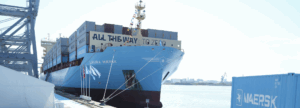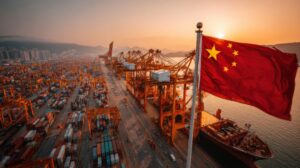Europe’s maritime sector is making progress towards greater sustainability but will need to increase its efforts over the coming years to meet EU climate and environment goals aimed at reducing energy use, pollution, and greenhouse gas emissions as well as better protecting biodiversity.
That’s according to the second edition of the European Maritime Transport Environment Report, released recently by the European Maritime Safety Agency (EMSA) and the European Environment Agency (EEA).
Maritime transport plays a crucial role in sustaining trade, economic growth, connectivity, and accessibility, while also contributing to energy security and job creation.
However, increased transport demand for the maritime sector comes with additional environmental impacts on the atmosphere and marine ecosystems.
According to the report, which gives an update on the environmental performance of the sector and an assessment of efforts to make it more sustainable, some progress has been made but reducing emissions remains a challenge.
Activities like shipping of cargo, containers, commercial fishing, tankers, and cruise ships, as well as port activities, remain significant contributors to a wide range of environmental challenges, with the whole sector accounting for 3-4% of the EU’s overall carbon dioxide (CO2) emissions, a share that needs to decrease.
Meanwhile, methane gas (CH4) emissions have at least doubled between 2018 and 2023, accounting for 26% of the sector’s total methane emissions in 2022. Apart from greenhouse gas emissions, reducing air pollutants like sulphur and nitrogen oxides (NOX) continues to be an issue.
Maritime transport also continues to contribute to water pollution, through oil spills and wastewater discharges from ships, as well as underwater noise.
Marine litter from fisheries and shipping is estimated to have halved over the last decade but remains difficult to comprehensively tackle. Container loss, including those containing plastic pellets also remain an important source of sea pollution.
The report also reveals that the use of alternative fuels and sources of power has increased, although from a low base. However, as it currently stands, some prospective alternative fuels will need to significantly increase production to be able to meet potential demand. In addition, harmonised international guidelines will have to be developed and a supply of seafarers trained on new decarbonisation technologies.
Commending the report, the Commissioner for Sustainable Transport and Tourism, Apostolos Tzitzikostas, stated: “The new European Maritime Transport Environmental Report is a valuable guide for the future of European shipping, one that is both sustainable, competitive, and resilient. This report is also a call to action. By working together, we can ensure that maritime transport remains a key player in our global economy, while minimizing its environmental impact and safeguarding our oceans for future generations.”
“Continued action and increased innovation are needed to accelerate the progress made towards more sustainable maritime transport in Europe – across all its operations – to reach the ambitious targets of the European Green Deal while preserving the competitiveness of the sector. Our joint report is intended to provide policymakers and citizens with a factual, evidence-based assessment of the current and future challenges to the sector’s decarbonisation journey, as well as the opportunities that digitalisation and advanced technology can bring for the green transition of maritime,” said Maja Markovčić Kostelac, EMSA’s Executive Director.



